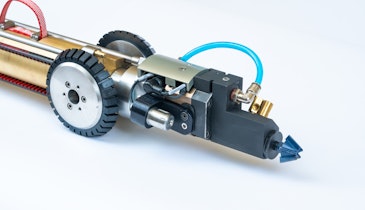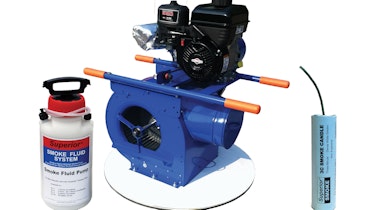Interested in Education/Training?
Get Education/Training articles, news and videos right in your inbox! Sign up now.
Education/Training + Get AlertsIn 2016, a group of engineers, contractors and vendors began working on an update to the NASSCO packer injection grouting technical specifications. It was recognized that recent practices in chemical grouting, or more specifically, capital grouting, had achieved significant long-term reductions in infiltration. These results were documented via independently conducted studies.
The changes in tools, practices and procedures were based on an understanding of how the grout in situ was achieving long-term seals. These results were backed up by several studies conducted using pre- and post-rehabilitation control-based procedures to determine that not only was long-term infiltration elimination effective but remained effective for over a decade.
The group’s objective was to update the NASSCO packer injection grouting technical specifications to incorporate capital grouting techniques and to differentiate them from the traditional, short-term or pre-rehabilitation grouting methodologies. While developing these specifications, several questions arose that necessitated scientific investigation. To confirm/prove the underlying reasons that capital grouting was so effective over such a long period of time, this team identified the need to design a full-scale test. The conception of the Test Cell Study was initiated because of the recognition that significant changes in the understanding of how chemical grout works to seal out pipe leakage, especially long term, had been achieved in prior decades.
The test cell program was intended to evaluate the variables that go into how grout is applied via packer injection grouting, and to assess the resulting formations using a set of variables and evaluation criteria.
The variables included:
- Pumping rates
- Gel times
- Step grouting practices
- Soil types or pipe beddings
The evaluation criteria included:
- The shape and formation of the grout mass
- The strength or the cohesion of the grout mass, both above and below the pipe upon excavation
To determine if the grout achieved a seal at the defect, the following were documented:
- Testing procedures using packer method positive air test
- The dissection of the grouted mass or gel/soil matrix
- The shape and volume of the grout seal surrounding the defect
This was done by assessing the impact of the grouting variables to determine where the grout provided the best long-term results in sealing the actual defect, stabilizing the pipe, and providing a trench dam to reduce trench water migration.
It was decided in 2016 that a test cell would be constructed of suitable dimensions that would allow an independent testing team to trial different types of grouting practices, exhume the resulting grout masses, and assess what was going on outside the structure. This work was done specifically to guide the developing specification, the technical manual, and the engineer and inspector certification training program.
This white paper documents the results of the test cell findings and the conclusions that resulted, refers to the eight different tests that were conducted, and includes many photographs to illustrate the findings to collaborate the results and conclusions. To download the white paper and other grouting specification guidelines, please visit www.nassco.org/resources/nassco-specification-guidelines.





